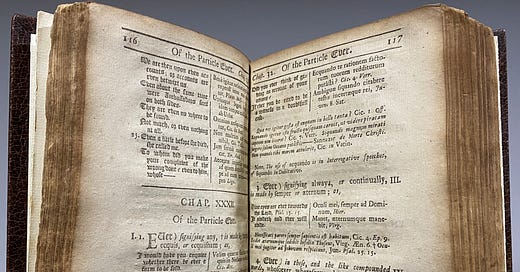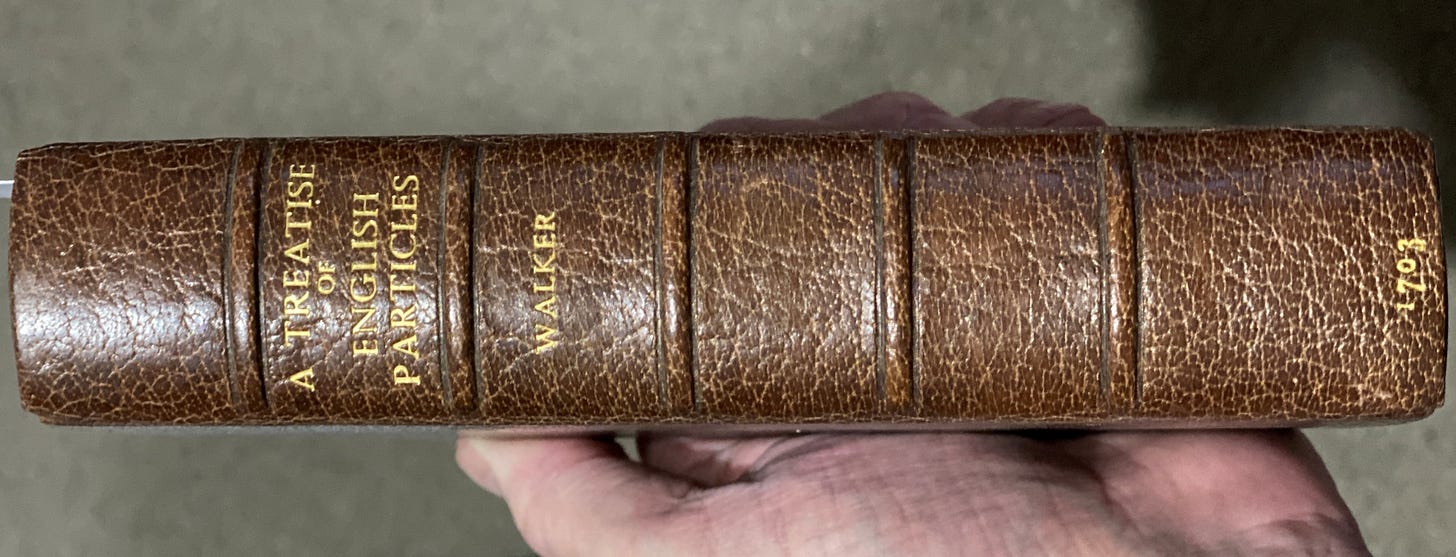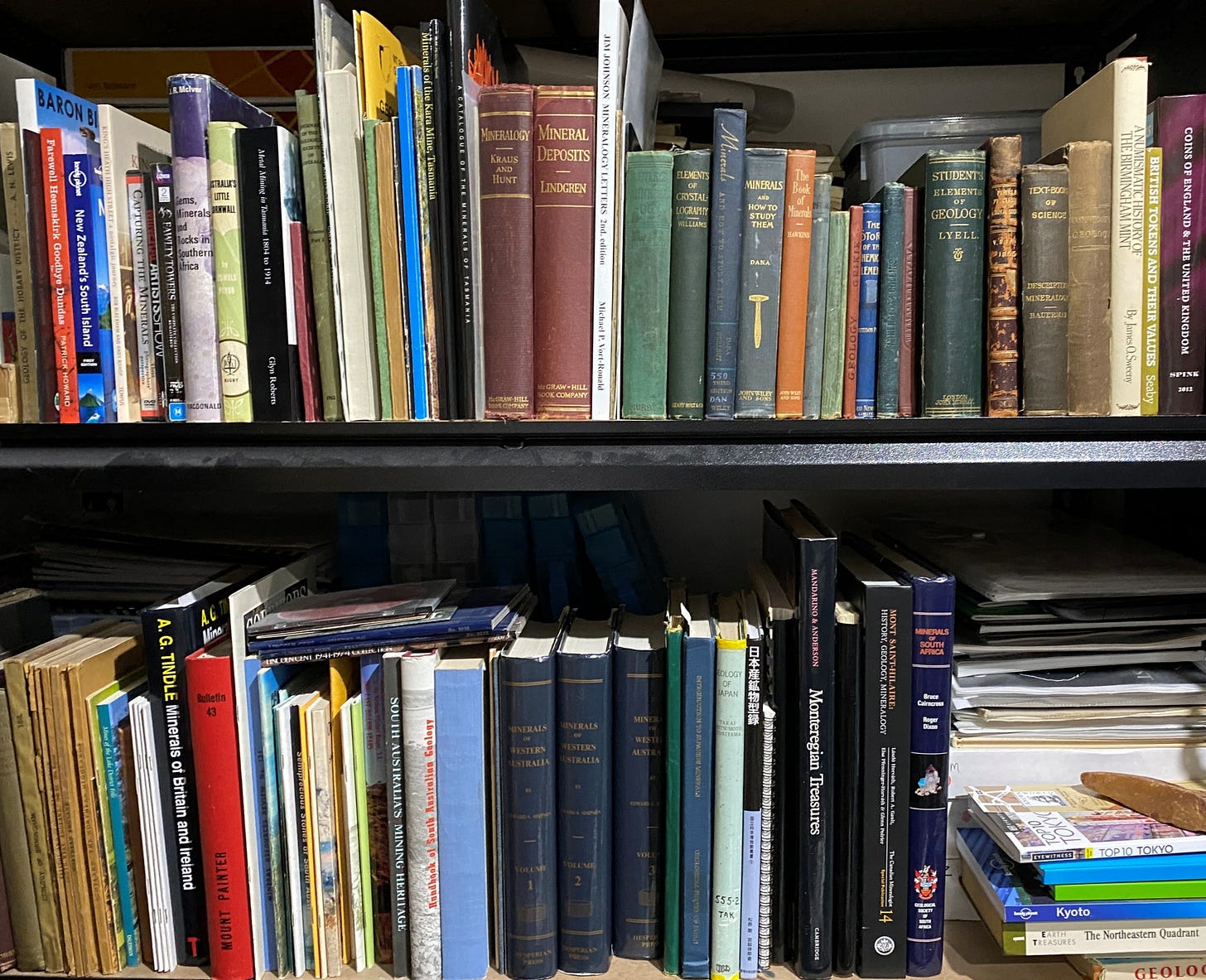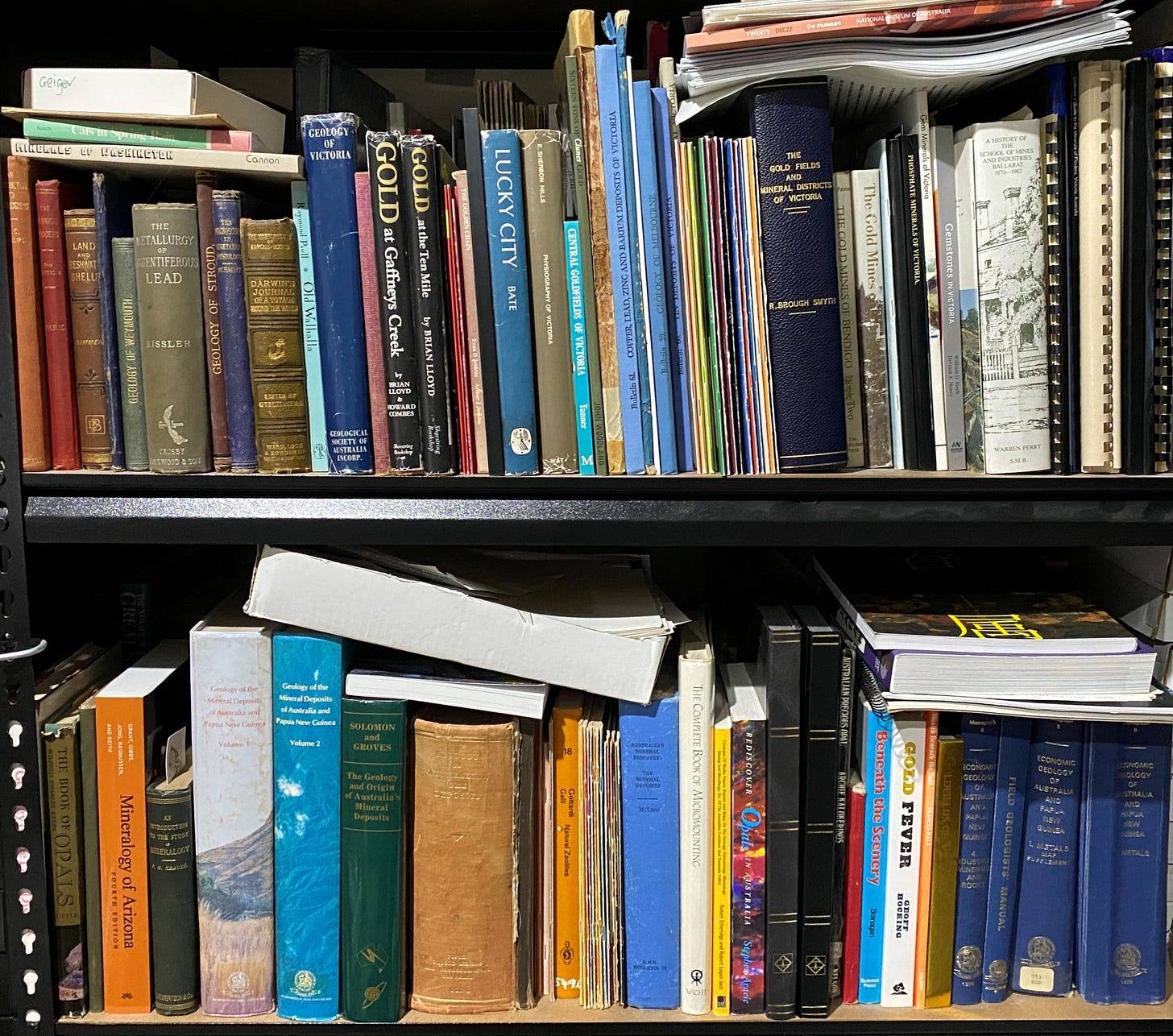I have a fairly decent library, and have a soft spot for old books in particular.
My wife gets concerned that between my books and boxes and drawers full of rocks, this end of the house is sinking. I just tell her that they keep it stable when we have our irregular earthquakes!
Most of my books relate to minerals, or at least, the Earth Sciences, but once in a while I pick up something totally unrelated. This week was one of those times.
I dropped in to a local second hand bookshop while I was waiting for my wife to have her hair cut. And I came across a book that is over 300 years old! Granted, at some point in time, it has been rebound, but the inside is original.
The book in question is “A Treatise of English Particles: Shewing Much of the Variety of Their Significations and Uses in English: ... With a Praxis Upon the Same” by William Walker, B.D.
Lots of Old English S’s look like F’s, such as “these” spelled “theſe” which makes it a challenge to read. But why do old documents have S’s that look like F’s? The medial S is an elongated form of the letter S. It looks like a lowercase F, but with a line sticking out only on the left side of the letter. It was used in manuscripts published between the 8th and 19th centuries whenever the letter S appeared at the beginning of, or in the middle of a word. So sound would be ſound, and blessing would be bleſſing, but congress would be congreſs!
The book dates back to 1703! And it did not coſt an arm and a leg and my wallet didn’t ſuffer! 😆
Google Books has this edition scanned so it can be read online. This doesn’’t have the same feel (or smell) as the real thing though.
I have included a couple of photos of mineral and related books that I own to keep this as a mineral-related post! 😁








Wonderful! Me too. My wife won’t let me near a bookshop if she can help it. Favourites include original 1886 copy of The Playbook of Science by John Pepper ( he of ‘Pepper’s Ghost’ fame) featuring experiments with phosphorus, the Victorians were far more enlightened when it came to chemistry and educating children. One of the oldest is the Lexicon Physico-Medicum ( my keyboard won’t do the old s) 1736, with physics mixed with physic.
A lucky find was a first edition of The Testimony of the Rocks by Hugh Miller (of The Old Red Sandstone fame) 1857 for £1.00!
In one book I found an invitation to a dinner meeting at The White Hart at Swaffham 1788.
In another a ‘ banknote’ for a London brothel called the the Temple of Hymen’ 1847!
As a very young lad I would find real banknotes sorting books in my father’s junk shop ‘The Odd Spot’, the best pre-education any child could acquire. Some of the items hidden and fastened beneath drawers opened my eyes, some were heartbreaking. And the history revealed in old newspapers used to line those drawers…
very cool! I love old books, too! (eg: some edition of Newton's Principia)